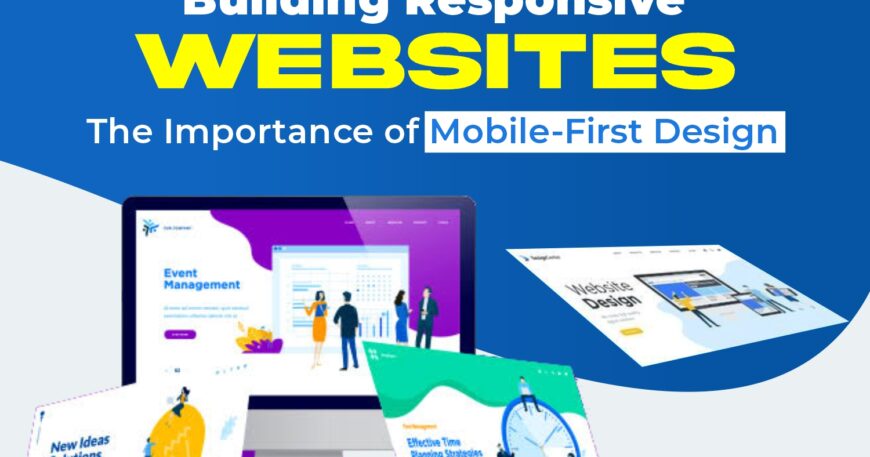In today’s digital era, the importance of mobile-first design cannot be overstated. With the proliferation of smartphones and tablets, more users are accessing the internet on mobile devices than ever before. As a result, designing websites with a mobile-first approach has become essential for ensuring a seamless and satisfying user experience across all devices.

What is Mobile-First Design?
Mobile-first design is a design approach that prioritizes the user experience on mobile devices over desktops or other larger screens. Instead of designing a website for desktop users first and then adapting it for mobile, mobile-first design starts with the smallest screen size and progressively enhances the design for larger screens.
Why Mobile-First Design Matters:
- User Experience: Mobile users have different needs and behaviors compared to desktop users. By designing with mobile users in mind from the outset, you can create a user experience that is optimized for smaller screens, touch interactions, and on-the-go usage.
- Page Speed: Mobile-first design often leads to lighter, more streamlined websites that load faster on mobile devices. Since mobile users tend to have less patience for slow-loading websites, optimizing for speed is crucial for reducing bounce rates and retaining visitors.
- Search Engine Optimization (SEO): Google and other search engines prioritize mobile-friendly websites in their search results. By adopting a mobile-first design approach, you can improve your website’s mobile-friendliness and enhance its visibility in search engine rankings.
- Future-Proofing: With the continued growth of mobile usage, designing with a mobile-first approach ensures that your website is well-equipped to adapt to future changes in technology and user behavior. By future-proofing your design, you can maintain relevance and usability for years to come.
Best Practices for Mobile-First Design:
- Content Prioritization: Start by identifying the most important content and features for mobile users and prioritize them in your design. This ensures that users can quickly access the information they need without unnecessary clutter or distractions.
- Responsive Layouts: Use responsive design techniques to create flexible layouts that adapt seamlessly to different screen sizes and orientations. Employ techniques such as fluid grids, flexible images, and media queries to ensure a consistent experience across devices.
- Touch-Friendly Interactions: Optimize your website’s navigation and interactive elements for touch input. Use larger tap targets, avoid hover-dependent actions, and minimize the need for pinch-to-zoom gestures to make your website more user-friendly on touchscreens.
- Performance Optimization: Prioritize performance optimization techniques such as image compression, lazy loading, and minimizing HTTP requests to improve page load times on mobile devices. Test your website’s performance across a variety of devices and network conditions to ensure optimal performance for all users.
Conclusion:
In conclusion, mobile-first design is not just a trend – it’s a fundamental shift in the way we approach web design in a mobile-first world. By prioritizing the needs of mobile users and designing with their experience in mind, you can create websites that are faster, more user-friendly, and better optimized for search engines. Embrace mobile-first design principles in your next web design project and watch as your website resonates with users across all devices.





